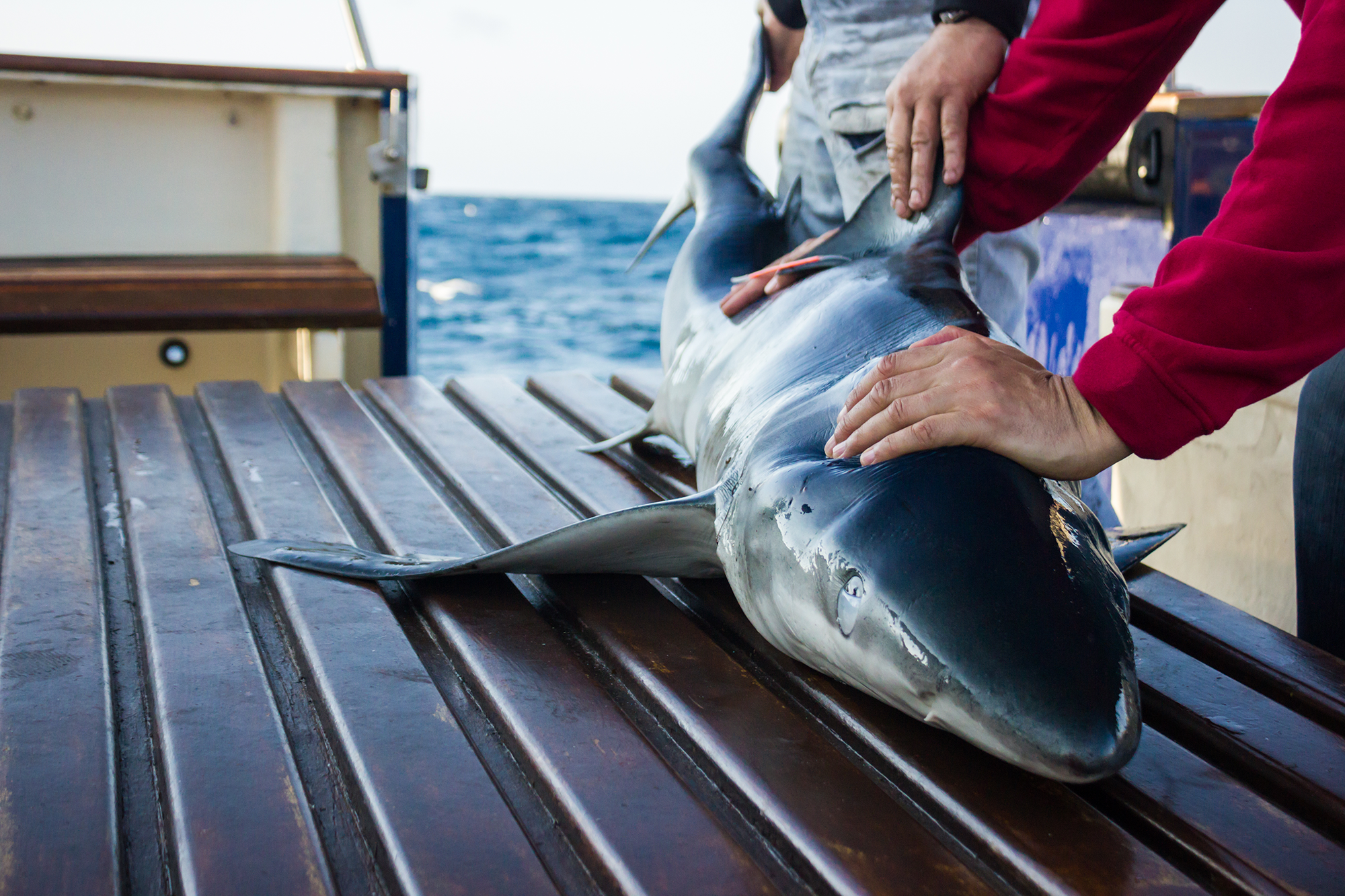Threats in Canada
Roughly a quarter of all shark, skate and ray species globally are threatened with extinction. In Canada, and globally, the number one threat to sharks is overfishing, which means fishing a species or population faster than it can be replenished. Sharks, skates and rays are particularly vulnerable to overfishing because they grow more slowly, live longer and generally reproduce at a slower rate than many other fish species; when a shark is killed, it takes a lot longer for that individual to be replaced than it would for a species that reproduces early, often and has a lot of offspring.
While issues like shark finning, which is the act of removing a shark’s fins and discarding the body at sea, have gained national attention, in Canada, our overfishing problem is a bit less visible in nature.
With few directed fisheries for sharks in Canada, and very little market for their meat, most of our sharks never make it to shore, but they are still being caught and killed in large numbers as accidental catch (known as bycatch) in other fisheries.
Bycatch, which is the most significant driver of the depletion of Canadian sharks, is accidental catch that happens when fishing for another target fish, like swordfish or Greenland halibut for example. There are hundreds of thousands of sharks caught as bycatch every year; some are landed to sell, but most are thrown back with varying degrees of survival.
The big problem is that most sharks caught as bycatch in Canada either have no limits placed upon catches, or have catch limits that are far too high or unenforceable, and therefore have little conservation value. There is also a lack of scientific knowledge about most of these shark species – for many, we don’t have a good grasp of how healthy their populations are, where and when they reproduce or how many we’re actually catching. This makes it really hard to make educated, science-based decisions on how many can be sustainably caught, and unfortunately Canadian fisheries management has not been erring on the side of caution.
While Canada has had a national ban on the act of shark finning since 1994, it was only in 2016 that a national policy was adopted which required all sharks caught and landed in Canada to have their fins naturally attached to their body at the time of landing. This “fins attached” policy is considered globally to be the best practice for enforcing shark finning bans and can also help increase confidence in fisheries data collection.
While the greatest concerns regarding shark finning have been addressed within Canada, outside our waters there are still countries that fish large quantities of shark and have significant loopholes in how their shark finning bans are enforced. Canada now has a role to play in leading by example, and encouraging these shark fishing nations to adopt a “fins attached policy” across the board, once and for all. This way, highly migratory shark species can be protected against the wasteful practice of shark finning wherever they roam.
What further complicates matters is that many sharks aren’t managed by Canada alone. As highly migratory species, these sharks spend time in Canada’s waters but also move around through the high seas and to other countries. There are several international management bodies set up so that countries can come together to decide on joint management measures for species, like sharks, that don’t tend to observe our countries’ borders. Canada has been both a friend and foe to sharks at these meetings in the past – but often a foe. Canada has the opportunity though to push other countries to take on the same best practices as we have, and work together to make sure that shark conservation is priority in and beyond our waters.
photo: Edward Marshall

